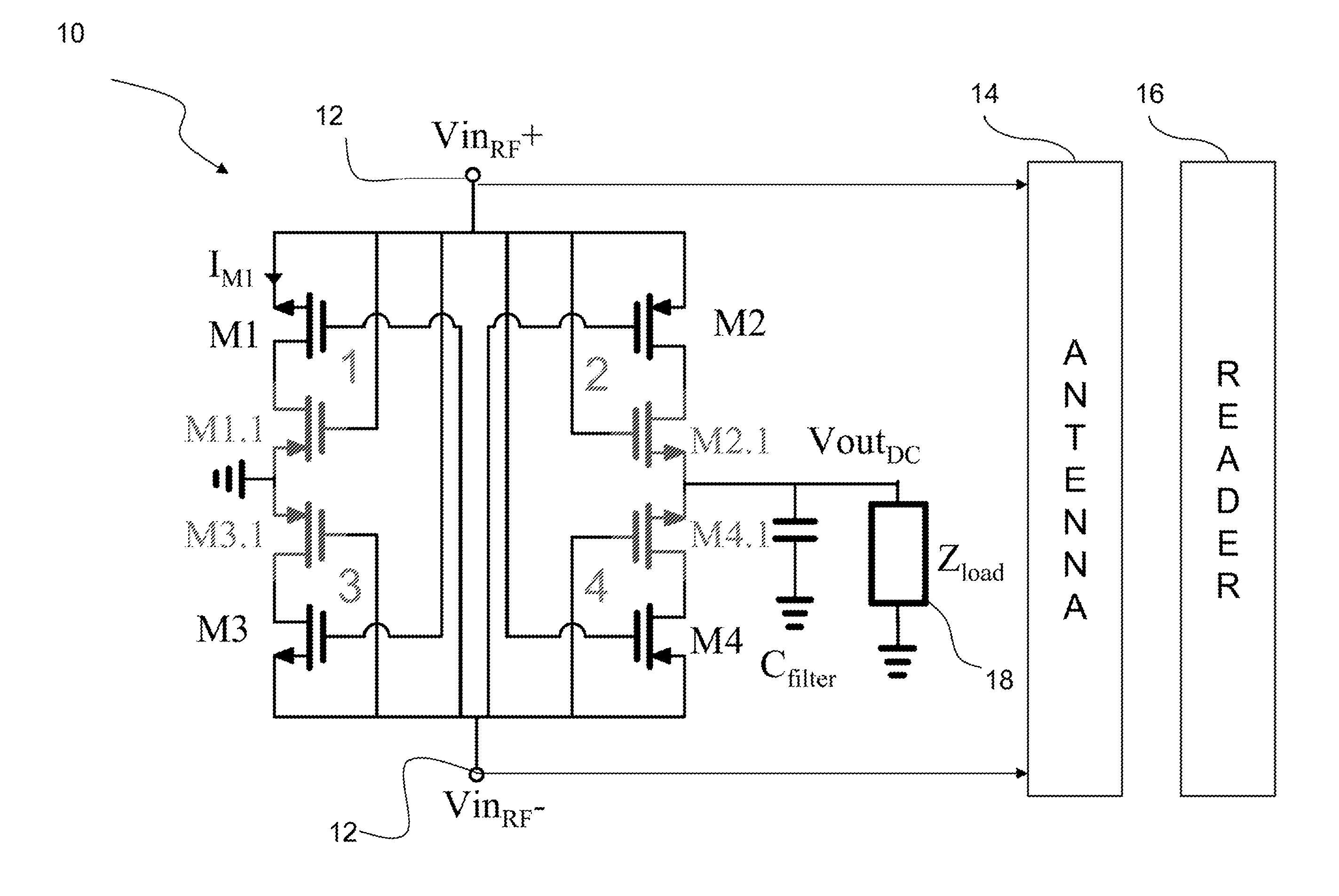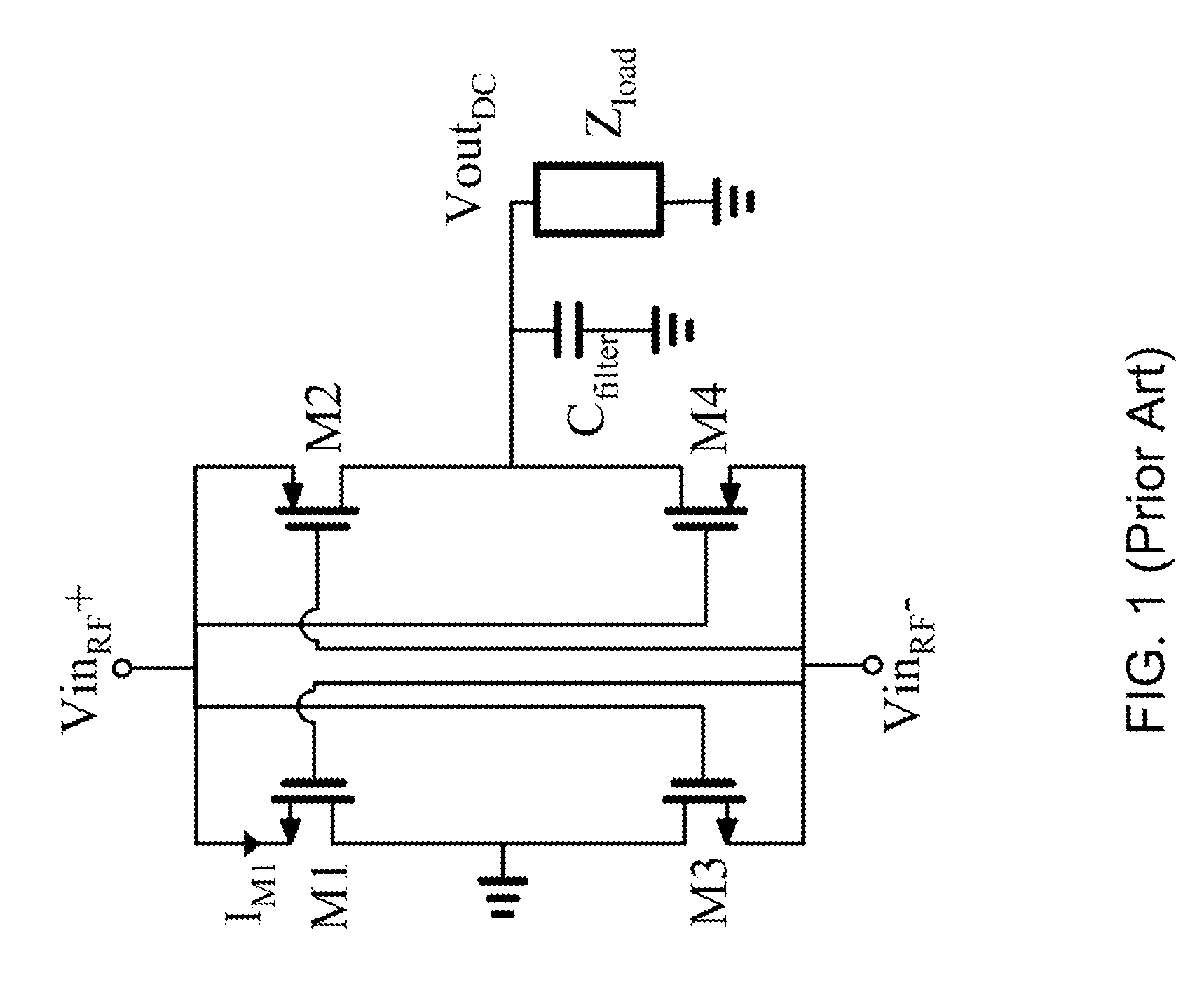Switch mode voltage rectifier, RF energy conversion and wireless power supplies
a voltage rectifier and switch mode technology, applied in the field of voltage rectifiers, can solve the problems of critical design hurdles for power supply, inefficiency of conventional rectifiers used in wirelessly powered devices such as uhf rfids, micro-sensors and biomedical implants, and the threshold voltage of devices, etc., to achieve high operating efficiency, low turn-on voltage, and increase on-resistance
- Summary
- Abstract
- Description
- Claims
- Application Information
AI Technical Summary
Benefits of technology
Problems solved by technology
Method used
Image
Examples
Embodiment Construction
[0018]Embodiments of the present invention provide cross-coupled rectifiers that use near zero-threshold transistors, but provide a topology that avoids the reverse conduction problem that would arise if such transistors would be used in the topology of FIG. 1. Importantly, preferred embodiment rectifiers of the invention only provide a slightly increased on-resistance in each branch, while providing both very high operating efficiency and very low turn-on voltage. An embodiment of the invention is a voltage rectifier for the conversion of RF energy into DC voltage with a turn-on threshold voltages approaching 0V. State of the art devices require some minimum voltage application to activate the devices, typically a few hundred millivolts, rendering them insensitive to very small input values. Preferred embodiment voltage rectifiers provide response to very low power RF signals, and have many applications. An example application is a sensing device to monitor very small input values ...
PUM
 Login to View More
Login to View More Abstract
Description
Claims
Application Information
 Login to View More
Login to View More - R&D
- Intellectual Property
- Life Sciences
- Materials
- Tech Scout
- Unparalleled Data Quality
- Higher Quality Content
- 60% Fewer Hallucinations
Browse by: Latest US Patents, China's latest patents, Technical Efficacy Thesaurus, Application Domain, Technology Topic, Popular Technical Reports.
© 2025 PatSnap. All rights reserved.Legal|Privacy policy|Modern Slavery Act Transparency Statement|Sitemap|About US| Contact US: help@patsnap.com



